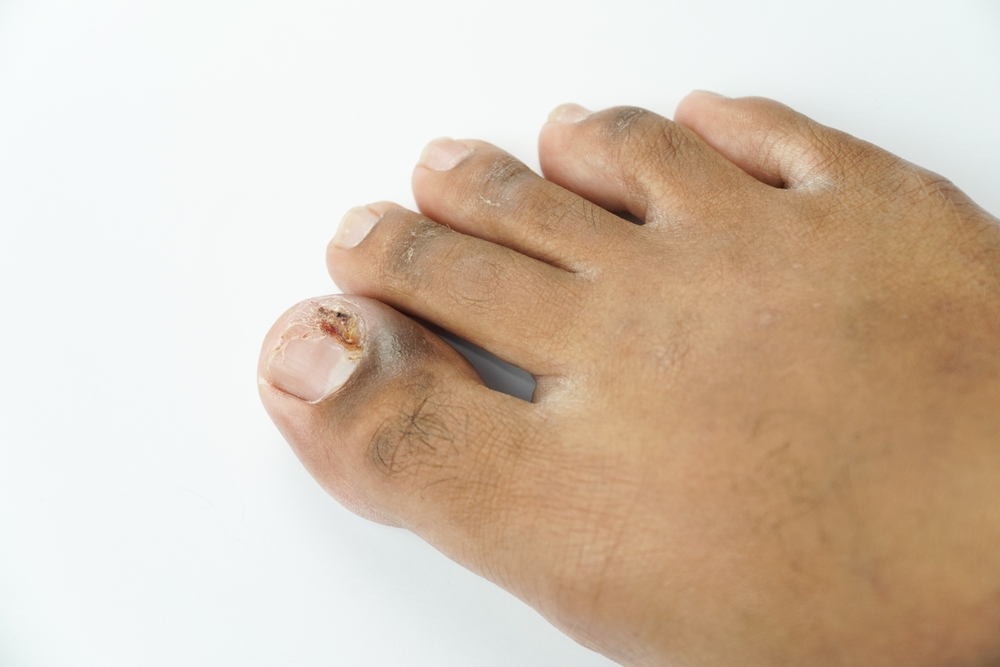You feel it first as a slight tenderness around your fingertip. Maybe you dismiss it as a paper cut or kitchen mishap. But within hours, that mild discomfort transforms into throbbing pain that keeps you up at night. What’s happening to your finger?
Chances are you’re experiencing a whitlow, a nasty infection that targets the fingers and thumbs, particularly around the nail beds and fingertips. While not exactly dinner conversation material, whitlows deserve your attention because they can progress from annoying to serious faster than you might expect.
Let’s dive into the telltale signs that separate this particular finger infection from ordinary cuts and irritations. Knowing these symptoms could save you from unnecessary suffering and potentially serious complications.
The progression from mild to miserable
What makes whitlows particularly tricky is how quickly they can escalate. That’s why recognizing the early warning signs is crucial for getting proper treatment before things get ugly.
It typically starts with mild redness and tenderness in one specific area of your finger. Many people remember a minor injury beforehand, like a hangnail they picked at or a tiny cut from gardening or cooking. This initial stage is deceptively mild, lasting anywhere from a few hours to a day.
At this point, you might notice slight swelling and increased sensitivity to pressure, but nothing that seems particularly alarming. The affected area feels warm to the touch compared to surrounding skin.
As the infection takes hold, usually within 24-48 hours of the first symptoms, the pain intensifies dramatically. This isn’t your average finger pain. People describe it as throbbing, pulsating, or having a heartbeat of its own.
The redness spreads and becomes more pronounced, often forming a visible border around the infected area. Swelling increases noticeably, sometimes making the finger appear significantly larger than normal.
A hallmark sign at this stage is extreme tenderness. Even light contact with the affected finger, such as accidentally bumping it against something, can cause sharp, shooting pain that makes you wince.
Left untreated for several days, a whitlow typically progresses to its most recognizable and painful form. This is when most people finally seek medical attention, often after trying various home remedies without success.
The fingertip becomes tight and shiny from internal pressure. The pain becomes constant and severe enough to interfere with sleep and daily activities. Many describe it as feeling like the finger might actually burst.
The most distinctive sign is the formation of a visible pus-filled blister or pocket. This typically appears yellowish-white against the angry red surrounding skin. In some cases, multiple small blisters cluster together instead of forming one larger pocket.
Location matters – the telltale places whitlows appear
Unlike some random skin infections, whitlows have favorite real estate on your hands. Knowing where they typically show up helps distinguish them from other hand problems.
The sides of your nails, where the nail meets skin, rank among the most common whitlow locations. This area is vulnerable because many of us pick at hangnails or push cuticles back during manicures, creating tiny entry points for infection.
When whitlows develop here, they often create visible pus that appears to be coming from under or beside the nail itself. The entire side of the finger may become red and swollen.
The fleshy pad of your fingertip contains many nerve endings, which partly explains why whitlows here are extraordinarily painful. Infections in this location often make the entire fingertip appear rounded and tight.
As the infection progresses, you might notice that your fingertip feels firm and almost wooden when pressed gently. The skin becomes stretched and shiny, and in severe cases, you might even lose some sensitivity in the area as swelling compresses nerve endings.
Perhaps the most painful location is underneath the nail itself. When bacteria enter this space, they create increasing pressure in a confined area with nowhere to expand.
The result is intense, throbbing pain that seems disproportionate to what’s visible externally. You might notice the nail beginning to lift slightly from the nail bed or developing a discolored area underneath.
Beyond pain – the surprising symptoms
While pain and swelling justifiably get most of the attention, whitlows come with several other symptoms that help identify them.
One hallmark of whitlows is how the tenderness focuses in one specific spot, especially in early stages. If you gently press different areas of your finger, you’ll likely find one particular point that’s exquisitely sensitive compared to surrounding areas.
Infected fingers feel noticeably warmer than adjacent fingers. This localized heat comes from increased blood flow as your body mounts its immune response against the infection.
Try this simple test. Close your eyes and touch the suspected whitlow finger with your opposite hand, then touch an unaffected finger. The temperature difference is often obvious even without a thermometer.
As your body fights the infection, you might notice tenderness extending up your hand and arm. This happens when the infection activates your lymphatic system, the network of vessels that helps filter out pathogens.
In more advanced cases, you might even feel swollen, tender lymph nodes at your elbow or armpit on the same side as the infected finger. This is a clear sign your body is working hard to contain the infection.
The pain from a whitlow often restricts finger movement in specific ways. You might find yourself unable to fully straighten the affected finger or experiencing sharp pain when trying to bend it.
This restricted range of motion stems from both the physical swelling and your body’s protective response to limit movement of the infected area.
Different types reveal different symptoms
Not all whitlows are created equal. Depending on what’s causing the infection, symptoms can vary in important ways.
Most commonly caused by Staphylococcus aureus bacteria, bacterial whitlows typically develop rapidly over 1-3 days. The pus tends to be thick and yellowish or white, and the surrounding redness has a clearly defined border.
Pain from bacterial whitlows often has a distinct throbbing quality that worsens when the hand is lowered below heart level. This happens because gravity increases blood flow to the area, raising pressure in the already swollen tissues.
Herpes simplex virus can cause whitlows with some distinctive characteristics. These often begin with tingling or burning sensations before visible symptoms appear.
Unlike bacterial infections, viral whitlows typically feature clusters of small, fluid-filled blisters rather than a single pocket of pus. The fluid inside these blisters is usually clear or slightly cloudy rather than thick and yellow.
People with viral whitlows sometimes experience flu-like symptoms including mild fever, body aches, or swollen lymph nodes in the days before or during the finger infection.
When to sound the alarm
While most whitlows remain localized infections, certain symptoms signal that things have taken a more serious turn requiring immediate medical attention.
If you notice a red streak extending from your infected finger up your hand or arm, seek medical care immediately. This could indicate a spreading infection called lymphangitis, potentially leading to more serious systemic infection.
Any significant loss of sensation or inability to move your finger requires urgent evaluation. These symptoms might indicate that swelling is compressing nerves or that the infection has spread to deeper tissues.
Fever, chills, unusual fatigue, or generally feeling unwell alongside your finger infection suggests your body is fighting harder than it should have to. These systemic symptoms indicate the infection might be spreading beyond your finger.
Most whitlows should show some improvement within 2-3 days of appropriate treatment. If your symptoms continue worsening despite care, or don’t improve at all, that’s your cue to seek medical help.
Understanding these symptoms doesn’t just satisfy curiosity. It empowers you to recognize problems early, seek appropriate treatment, and potentially avoid the more painful and dangerous advanced stages of whitlows. When it comes to these nasty finger infections, knowing what to look for truly makes all the difference.

















